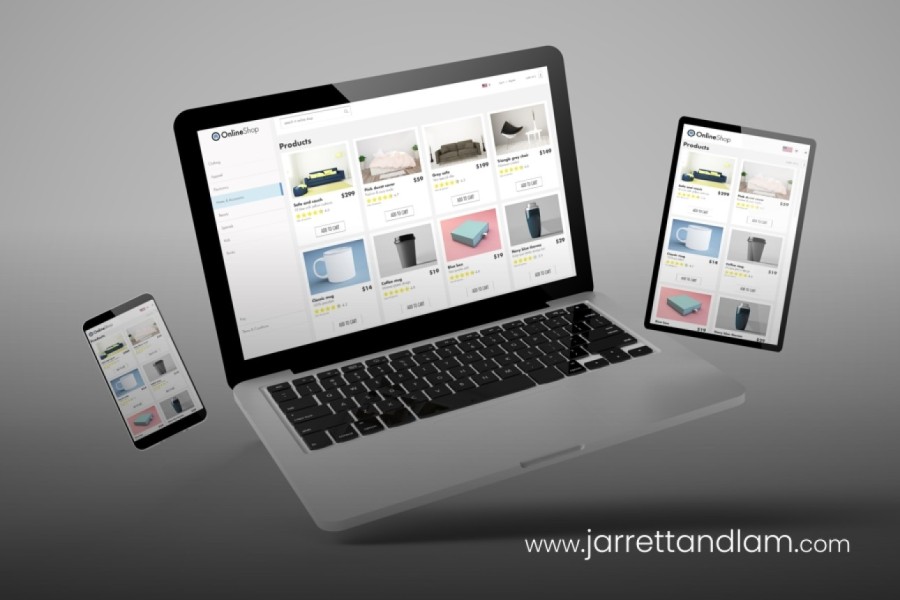Understanding Website Making: A Clear Guide to Your Options

Posted by: Tim Jarrett

Creating a new website involves several key decisions. With many options at your fingertips, it can feel overwhelming, particularly without a technical background. This guide breaks down these choices, providing a clear explanation of the variety of website development methods in use today. Covering everything from template-based platforms to custom coding and everything in between, each section gives an overview of the method's strengths and weaknesses. By using real-world examples, this guide aims to make these methods relatable and understandable. The ultimate goal is to help you make informed decisions to meet your unique website needs.
1: Website Builders
Website builders are online platforms that allow users to create a website using drag-and-drop tools. Some well-known examples of website builders are Wix, Squarespace, and Weebly.
Reasons for Choosing Website Builders:
Website builders are chosen for their simplicity and the speed at which a functional website can be built. They are designed to be accessible for beginners and do not require coding knowledge. They are ideal for individuals or businesses that need a basic website quickly and do not want to spend a lot of time or resources on website development.
Advantages:
- Simplicity: Website builders have user-friendly interfaces that make it easy to build a website quickly.
- Speed: With website builders, a basic website can be launched within a day.
- All-In-One Solution: Many website builders include hosting, templates, and sometimes even domain names, reducing the number of things a user needs to worry about.
Disadvantages:
- Limited Customisation: Website builders may not offer the level of customisation that CMS or custom-built websites do. They rely on predefined templates, which may limit uniqueness.
- Limited Scalability: While they are excellent for basic websites, website builders may not have the necessary features to support the growth of businesses over time.
- Potential Costs: Although many website builders offer free versions, these often come with limitations. Unlocking more features may require a move to a more expensive plan.
Suitable for:
Website builders are often best for personal websites, portfolios, blogs, or small businesses that do not require complex functionalities. They can be a great starting point for small-scale projects with limited budgets. However, they may not be the best choice for websites that expect to scale significantly in the future or require unique, complex functionalities.
2: E-commerce Platforms
E-commerce platforms are specialised systems designed specifically to sell products online. They include well-known options like Shopify, Magento, and BigCommerce.
Reasons for Choosing E-commerce Platforms:
E-commerce platforms are the go-to solution for individuals and businesses that intend to sell products or services online. They offer features specifically tailored to online selling, such as inventory management, payment processing, and shopping cart functionalities.
Advantages:
- Specialised for Selling: E-commerce platforms include features specifically designed for online sales. These platforms understand the needs of an online store and cater to these needs out of the box.
- Scalability: Many e-commerce platforms offer scalable solutions, allowing businesses to start small and grow over time.
- Integrated Payment Systems: These platforms usually have integrated payment gateways, making it easier for businesses to accept payments from customers.
Disadvantages:
- Costs: E-commerce platforms often come with monthly fees, and some charge transaction fees. The cost can add up over time, especially for larger businesses.
- Limited Customisation: Similar to website builders, the customisation options might be limited compared to a custom-built website.
- Complex Setup: Setting up an online store can be a complex task, especially for larger inventories or more specific business models.
Suitable for:
E-commerce platforms are suitable for businesses that primarily sell products or services online. They are less suitable for websites that don't require e-commerce functionalities or need extensive custom features not related to online selling. For small businesses with a limited budget or individuals looking to start a simple online store, they can be a good option. However, larger businesses or those with very specific needs may need a more custom solution.
3: Open-Source CMS
Open-Source Content Management Systems (CMS) such as WordPress, Drupal, and Joomla, provide a structure for managing, creating, and editing website content without requiring extensive technical knowledge.
Reasons for Choosing Open-Source CMS:
The choice for an open-source CMS is often made because these systems offer a high level of flexibility and customisability. They are particularly favoured by those who want a balance between ease-of-use and the ability to customise their site according to specific needs.
Advantages:
- Customisation: Open-source CMSs offer extensive customisation possibilities. This is mainly due to the large developer communities that create and share themes and plugins.
- Cost-Effective: As they are open source, these platforms are free to use. Costs may arise from premium themes or plugins, but the core software is free.
- Active Communities: Given their popularity, there are extensive online communities for open-source CMS platforms. This means it’s easier to find solutions to problems, tutorials, and developers who can assist with customisation.
Disadvantages:
- Learning Curve: While open-source CMSs do not require advanced technical skills, there is still a learning curve involved in understanding how to best use and customise the platform.
- Maintenance: Regular updates are needed for the core software, themes, and plugins to maintain security and functionality.
- Potential for Bloated Code: With the availability of many plugins and themes, there's a risk of overloading a site with too many features, which can affect website performance and speed.
Suitable for:
Open-source CMSs are a good option for a wide range of websites, from blogs to small business websites, and even e-commerce (with the use of plugins like WooCommerce for WordPress). They are especially suitable for those who want a more customised website but don’t have the resources to invest in a custom-coded site. With the right knowledge or hired help, they can be adjusted to fit nearly any need.
4: Proprietary CMS
A Proprietary CMS is a content management system that is developed, owned, and distributed by a single company. The creators of these systems control who can use them and how they can be used. Examples of proprietary CMS include Shopify, BigCommerce, and Adobe Experience Manager.
Why People Might Choose This Method:
- Tailored Solution: Proprietary CMS providers often deliver tailored solutions specific to the needs of certain industries or business sizes. These CMS are designed to work seamlessly for a specific set of requirements, offering a more streamlined experience for users.
- Support and Updates: Since the CMS is owned and managed by a single company, users can expect dedicated support and regular updates. These systems often come with a team of experts who can assist with issues and ensure the platform remains secure and up to date.
- Integration with Other Services: Proprietary systems frequently offer seamless integration with other services offered by the same company, making for a cohesive user experience.
Disadvantages:
- Cost: Proprietary CMS typically come with licensing fees and can be a more expensive option compared to open-source or website builders. Costs can also rise if additional support or features are needed.
- Limited Flexibility: While they are tailored solutions, users can only customise within the boundaries set by the provider. This lack of flexibility can be a downside for businesses with unique needs.
- Vendor Dependence: There's a reliance on the company for updates, features, and support. If the company discontinues the CMS or goes out of business, users could be left without support or updates.
Types of Websites Using This Method:
Proprietary CMS are often chosen by medium to large businesses that need a robust, reliable solution and who are willing to pay for a premium service. They are particularly prevalent in ecommerce, thanks to platforms like Shopify, where their tailored solutions make setting up an online store straightforward.
5: Hybrid CMS
Hybrid CMS represents a mix of traditional CMS and headless CMS. It combines the front-end management capabilities of traditional CMS (content creation, templating, and layout) with the flexibility of a headless CMS (API-first approach, multi-channel delivery).
Why People Might Choose This Method:
- Flexibility: With hybrid CMS, users can enjoy the best of both worlds. It provides the flexibility to push content to any platform or device while also allowing users to manage content on a traditional web interface.
- Ease of Use: Like traditional CMS, hybrids come with user-friendly interfaces for managing content, negating the need for extensive technical knowledge.
- Multi-Channel Publishing: Hybrid CMS makes it easy to publish across multiple platforms or channels from a single system, increasing efficiency and consistency across all digital touchpoints.
Disadvantages:
- Complexity: While hybrid CMS offer more flexibility, they can also introduce more complexity compared to traditional CMS or website builders. It may require a higher level of technical expertise to make full use of their capabilities.
- Cost: Depending on the platform chosen, a hybrid CMS can be more expensive than other options. This is particularly the case if you require additional features or extensive customisation.
- Vendor Lock-In: Like proprietary CMS, there could be a risk of vendor lock-in with hybrid CMS. You'll rely on a single vendor for updates, support, and improvements.
Types of Websites Using This Method:
Hybrid CMS can be a suitable choice for businesses that want to maintain a traditional website while also distributing content to other digital platforms, such as mobile apps, digital displays, and social media. These might include large companies with a broad digital presence, media companies, and businesses prioritising multichannel marketing strategies.
Understanding Web Development Approaches in Practice
Choosing a web development method can seem challenging. Each method has its own strengths, weaknesses, and uses. Here's a clear comparison of what each method offers in practice:
Website builders like Wix and Squarespace are great for individuals or small businesses who want a simple and attractive website. They are easy to use but offer limited customisation.
Content Management Systems (CMS), such as WordPress or Joomla, are a step up. They are useful for small to medium-sized businesses or bloggers who want more control over their website. While a CMS is user-friendly, using it to its full potential might require basic coding skills.
Hand coding with HTML/CSS/JavaScript is the choice for creating unique, detailed websites or web applications. This method offers the most control but requires good coding skills and takes more time.
Back-end frameworks like Laravel and Django are used for complex, server-side operations. They are good for advanced applications like e-commerce sites, social networks, or CRM systems. These tools offer a lot of control, but they also require advanced skills and more time to develop.
Full-stack JavaScript methods such as Node.js or React are used for interactive websites or web applications. Using JavaScript on both the client-side and server-side is efficient and good for real-time applications.
A headless CMS, like Contentful or Strapi, is used when multi-channel content delivery is needed. It separates the front-end from the back-end, offering more control over how the website looks. This method can require more technical skills to manage.
For online stores, e-commerce platforms like Shopify and Magento are common. They have e-commerce features like product management, shopping carts, and payment processing. They are perfect for businesses selling products online but might be too much for websites that are not focused on e-commerce.
Remember, each project is different. This guide is a starting point, but a professional web developer can give tailored advice to choose the best method for each project's specific needs and goals.

